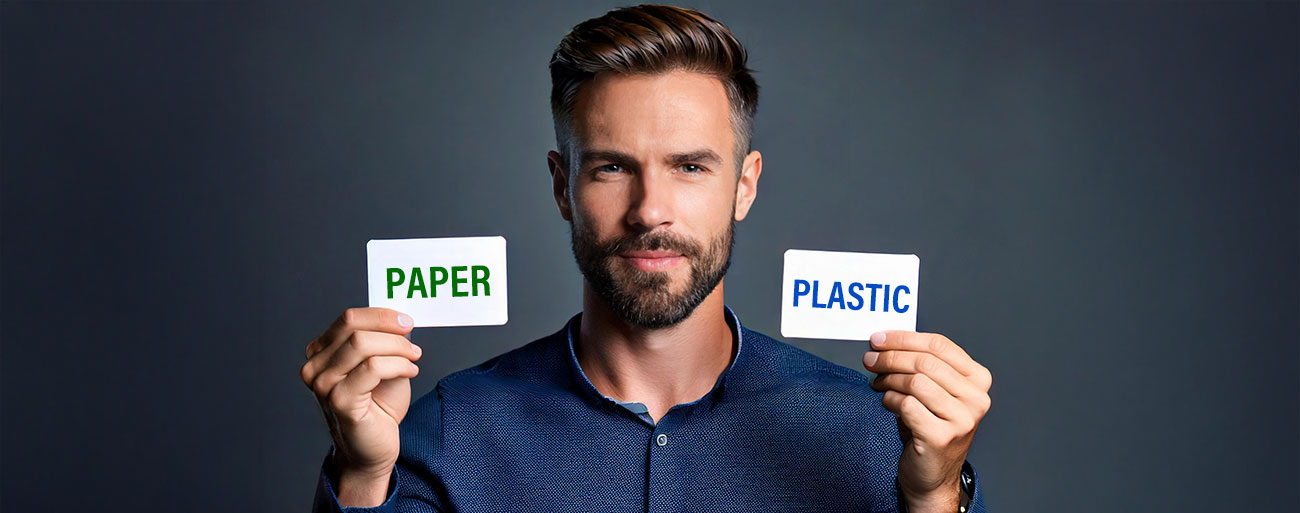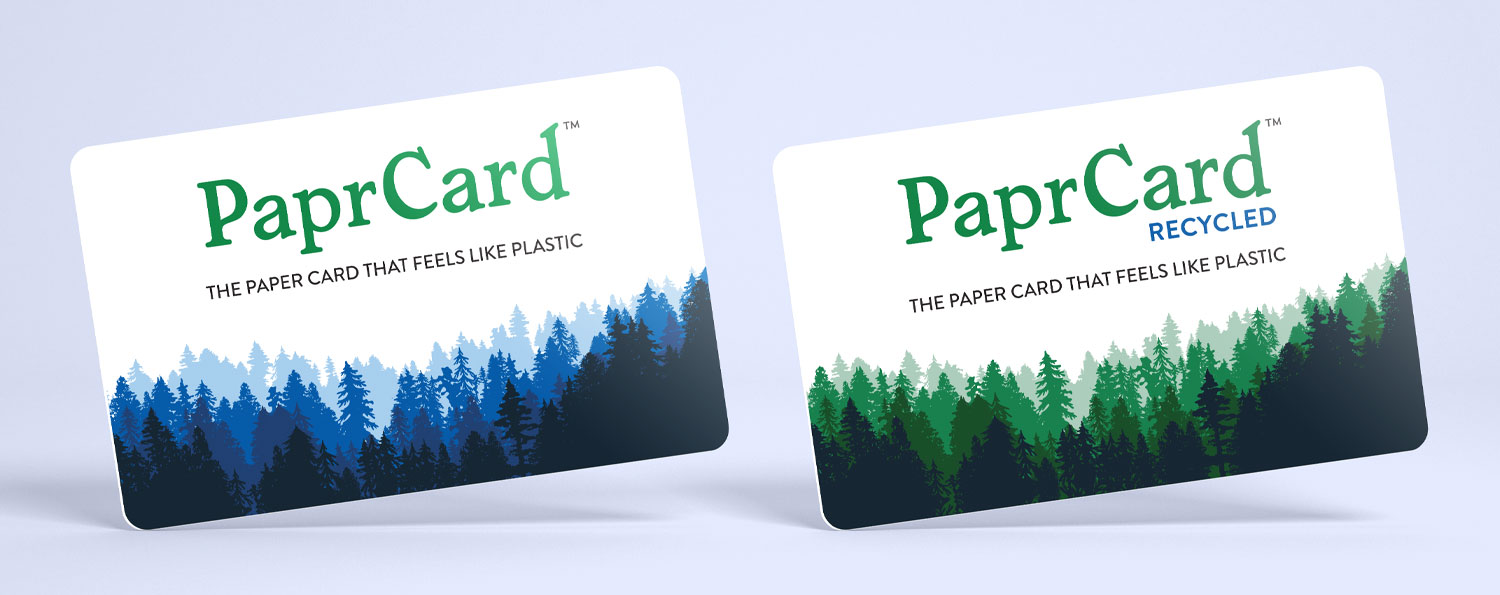Paper Gift Cards vs Plastic Cards: A Sustainable Revolution
Jan 3rd 2025

The familiar plastic gift card tucked into birthday cards and holiday stockings has been undergoing a quiet transformation.
Retailers across the world have been increasingly replacing traditional PVC plastic cards with innovative paper-based alternatives, marking a significant shift toward sustainability in the multi-billion dollar gift card market.
The environmental benefits of paper gift cards are compelling. Paper cards are significantly more recyclable than their plastic counterparts and can often be produced entirely from recycled material. The production of paper cards generates approximately 65% less carbon dioxide compared to plastic card manufacturing, representing a substantial reduction in carbon footprint.
Many Fortune 500 companies have already switched to paper gift cards and the quality is so good, most of their customers haven’t even noticed. Due to their thickness and multi-layer construction, consumers find paper gift cards to have the same familiar feel as PVC cards.
Perhaps most importantly, the shift to paper hasn't compromised functionality. Paper cards can still include magnetic stripes, barcodes, variable data, and QR codes, maintaining the same usability consumers expect while delivering environmental benefits.
These early adopters are reporting positive customer feedback, with many consumers specifically choosing paper cards for their eco-friendly attributes. This shift is particularly resonating with younger generations, who increasingly factor environmental impact into their purchasing decisions.
For consumers, the transition to paper gift cards offers an opportunity to make more environmentally conscious choices without sacrificing convenience or functionality. As we continue to seek ways to reduce our environmental impact, the simple act of choosing a paper gift card over a plastic one represents a small but meaningful step toward sustainability.
While gift cards are one of the most popular uses for paper cards, they can be a suitable replacement for most other plastic card applications including VIP cards, discount cards, membership cards, business cards, and RFID cards.
Looking to print your own paper gift cards?
The first step is to
order blank 28pt PaprCard™ RECYCLED paper gift cards. They are available with or without a magnetic stripe and are constructed entirely from FSC® certified post-consumer waste recycled fiber.
Can you print paper cards on a thermal plastic card printer?
Since paper gift cards make such a suitable replacement for plastic, it may seem like a good idea to simply swap out the stack of plastic for paper in your plastic card printer. It’s not that simple.
Standard thermal plastic card printers are specifically designed to work with PVC plastic cards. These printers use a combination of heat and pressure to transfer dye or resin from a ribbon onto the plastic card’s surface. This heat/resin combo is not compatible with paper cards.
Paper gift cards must be printed on using a printer that is specifically designed for paper CR80 sized cards (3.375” x 2.125”) that can handle extra thick 28pt paper. There are inkjet printers, UV flatbed printers such as Mimaki or Roland, and silkscreening machines among others that have these capabilities.

Prefer to order printed paper gift cards?
Print Robot offers PaprCard™ and PaprCard™ RECYCLED cards that are constructed from FSC® certified engineered paper from responsible sources and offer a robust, eco-friendly alternative to plastic cards. Simply select your quantity, imprint type, and any optional upgrades you’d like and receive instant pricing on paper gift cards through their website. Upload your print ready artwork or request free design services.
Ready or not, the sustainable revolution of gift cards from plastic to paper has begun. As retailers and consumers increasingly embrace this change, the future of gift-giving is becoming a bit greener, one paper card at a time.